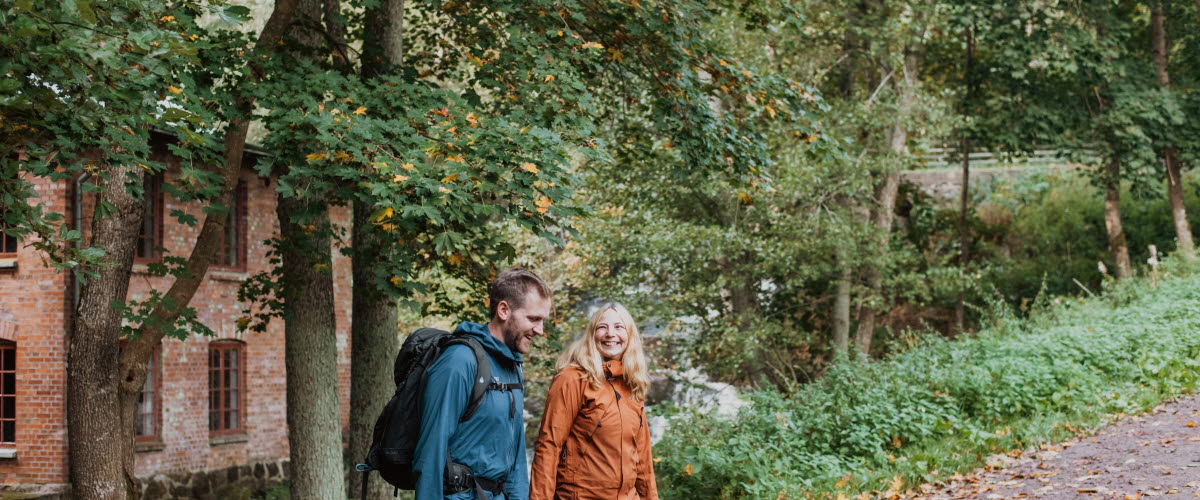Hjoån River Walk
- Visit Hjo, Tourist Information Center
A nature reserve in central parts of Hjo with both historical values and spectacular nature.
The river walk through the nature reserve along river Hjoån offers a beautiful spectrum of colours during all seasons. By following the small nature trail from the town center (follow the wooden signs marked "Naturstigen") up to the lake Mullsjön, west of Hjo, you hike just above four kilometres. A beautiful journey through both nature and our history.
The history
In medieval times, this trail was one of the most important transport routes, especially for the monks who came from Alvastra on the other side of lake Vättern. Eventually, many small trade huts like forges, tampers and mills were established here by the river. You can see the remnants of many of them during your hike. You’ll also pass the mill Grebbans Kvarn which is open for various events, such as trout safari in the autumn, and halfway up to the lake Mullsjön you’ll find the restaurant called Stampens Kvarn >>.
The importance of the mouth of lake Hjoån
The mouth of the river Hjoån is probably the place that created the conditions for our city to grow. In the early 1100s, the French brothers from the monastery of Clairvaux in France came up to a cold and barren land of the north, the somewhat reluctant Geats and Swedes were to all become Christians. On the east side of the lake, Alvastra was built and on the west side, Varnhem’s monastery. Sea traffic over the lake increased and Hjo gained in importance. So much that, in 1413, it received its town charter by Erik of Pomerania. Hjo was now considered to be an important trading hub to where merchants travelled to sell their goods, and buildings slowly began to emerge around the square.
Hiking, biking and canoeing in the area
Hjo offers beautiful scenery and a range of good outdoor activities, with several tours and trails for those wanting to bike or hike. The several kilometre long hike up to Lake Mullsjön tempts not only with the prospect of a nice evening dip, but also gives the opportunity to experience both flora and fauna along the way. You can also hike along the Västra Vätterleden trail >> or Pilgrimsleden >>, "the Pilgrim Trail", or canoe on the river Tidan >>. The open-air recreational areas of Sanna, just to the north of the town centre, and Högaliden, to the west of Hjo, offer floodlit tracks and trails in both summer and winter.
Would you like some more information?
Would you like to know more about what to do in Hjo? Don't be shy - contact the Tourist Information Center >> and we will help you out.
You can also buy the book about the nature reserve "Hjoåns Dalgång" (available in Swedish, English and German) in our shop.



